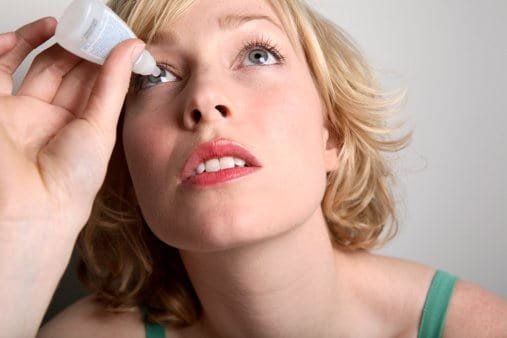Dry eye

What is dry eye disease?
Dry eye syndrome is a common disease affecting a significant part of the population, especially people over 40 years of age. It is characterized by the secretion of an insufficient amount of lacrimal coating. It develops more often in women than in men.
What are the symptoms of dry eye?
- Feeling dry, scratchy or slightly blurred vision;
- Burning or itching in the eyes;
- Redness of the eyes;
- Feeling of a foreign body in the eyes;
- Sensitivity to light;
Symptoms may be aggravated by dry weather, windy weather when air temperatures are higher and air humidity is low. With long-term eye strain, there is also an exacerbation of symptoms, for example, from reading, watching TV, long-term Internet surfing.
Sometimes a symptom of dry eye syndrome interrupts excessive tearing. When the eye becomes a little drier and irritated, it can initiate an oversecretion of lacrimal secretion for a short time. Thus, the eye tries to restore its normal state by ensuring sufficient humidity. But the eyes cannot absorb such a large amount of tear secretion. The remaining unabsorbed part begins to flow down the cheeks and do not help to achieve the usual eye moisture. A little later, the eyes will again be drier than usual, this will cause irritation and the whole process will repeat itself.
What are the reasons?
To keep your eyes and vision optimal, they have a thin tear film. Three main layers form this tear film.
The innermost layer is the thinnest. It is a thin coating of mucus that is secreted by cells in the conjunctiva. Mucus helps the covering aqueous layer spread evenly over the eye.
The middle (aqueous) layer is the largest in thickness and width. This layer as content is a highly diluted salt water solution. The lacrimal glands under the upper eyelids and the accessory lacrimal glands produce this aqueous layer. The function of this layer is to keep the eye moist and in optimal condition so that its visual function is not limited. It also helps keep dust particles or foreign bodies out of the eyes. Decreased secretion of the lacrimal glands is the most common cause of dry eye syndrome, also known as keratoconjunctivitis sicca.
The most superficial coating is a very thin layer of lipids. They are secreted by the lacrimal glands and sebaceous glands in the eyelids. The main function of this lipid layer is to prevent evaporation of the lower aqueous layer.
Dry eye treatment
To relieve the symptoms, you can try to help yourself by:
- Put a humidifier in the room where you spend most of your time. With higher air humidity, tear secretion evaporates more slowly. Cooling units in the summer and heating units in the winter lower the air humidity.
- Excessive air oscillations dry out your eyes. Avoid staying for long periods in places where there are strong air oscillations. For example, at home you should not turn on fans on the last setting or leave opposite windows open when there is a strong wind outside.
- High concentrations of dust particles in the air can aggravate the symptoms of dry eye. In this case, an air filter will be helpful.
- Apply warm compresses or apply thick layers of baby oil or other exfoliant to your eyelids.
- Artificial tear preparations and lubricating eye drops and gels are useful in providing the necessary moisture to the eye.



